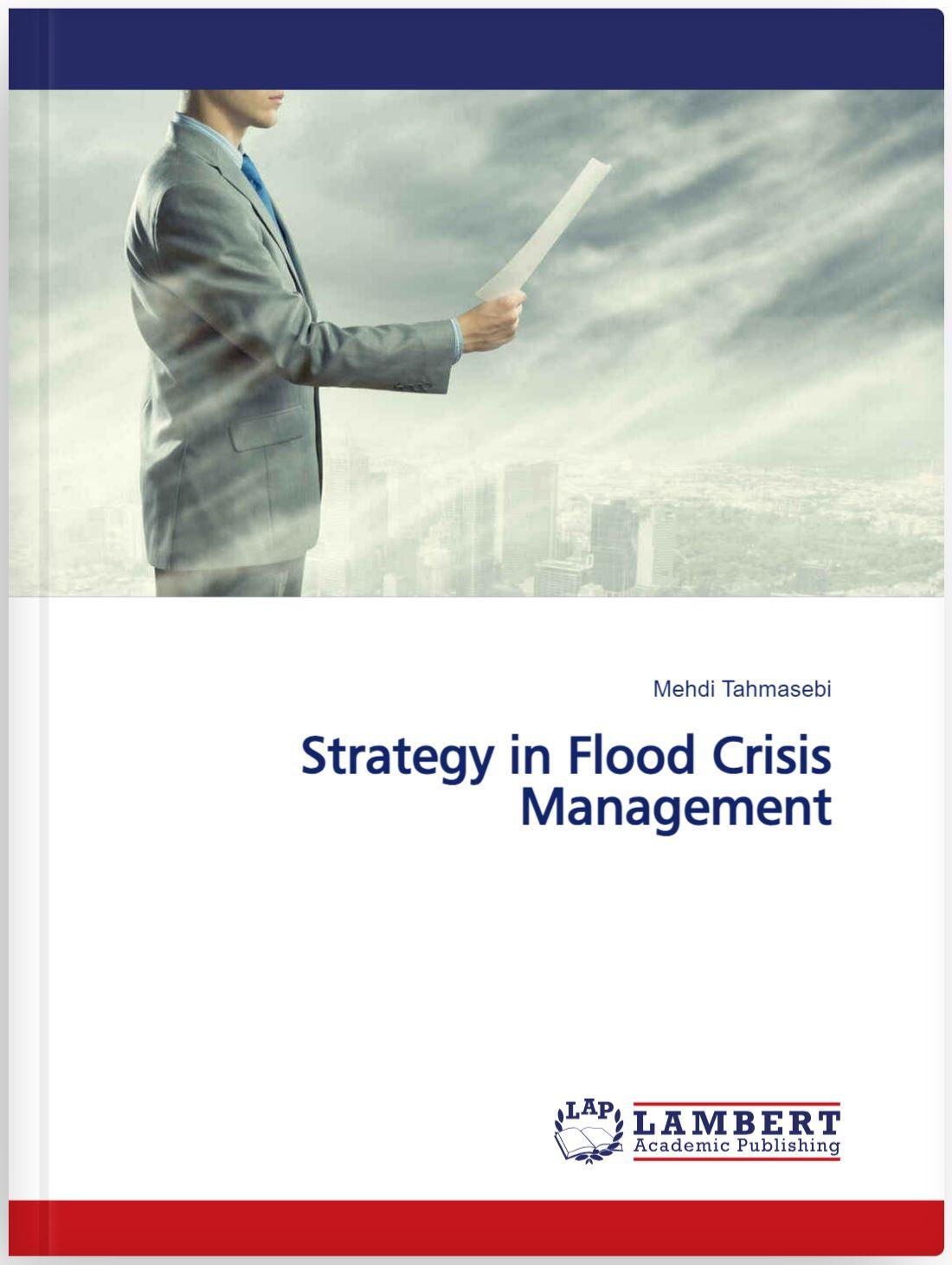کتاب Strategy in Flood Crisis Management
۶۶۶,۰۰۰ تومان قیمت اصلی: ۶۶۶,۰۰۰ تومان بود.۲۲۲,۰۰۰ تومانقیمت فعلی: ۲۲۲,۰۰۰ تومان.
| تعداد صفحات | 140 |
|---|---|
| شابک | 978-620-7-48639-7 |
| انتشارات |

کتاب Strategy in Flood Crisis Management – راهبردهای مدیریت بحران سیلاب
کتاب Strategy in Flood Crisis Management به بررسی جامع راهکارها و استراتژیهای مدیریتی برای مقابله با بحرانهای سیلابی میپردازد. این اثر با رویکردی علمی و عملی، به مدیران، محققان، و تصمیمگیران در حوزه مدیریت بحران و بلایای طبیعی کمک میکند تا با بهکارگیری روشهای کارآمد، اثرات مخرب سیلابها را کاهش دهند و جوامع را برای مواجهه با این چالشها آماده کنند.
درباره کتاب Strategy in Flood Crisis Management
این کتاب با تمرکز بر مدیریت بحران سیلاب، به شناسایی و تحلیل عوامل تأثیرگذار بر وقوع و شدت سیلابها میپردازد. نویسنده با بهرهگیری از تجربیات واقعی، دادههای آماری، و تحقیقات میدانی، مجموعهای از استراتژیهای پیشگیری، کاهش خسارات، و بازسازی پس از بحران را ارائه میدهد.
موضوعات کلیدی کتاب
- تحلیل ریسک سیلاب: شناسایی عوامل طبیعی و انسانی مؤثر بر وقوع سیلاب.
- استراتژیهای پیشگیری: طراحی سیستمهای هشداردهنده، بهبود زیرساختها و برنامهریزیهای شهری.
- مدیریت بحران: روشهای عملیاتی برای واکنش سریع و کاهش خسارات انسانی و اقتصادی.
- بازسازی پس از بحران: راهبردهایی برای بازسازی پایدار مناطق آسیبدیده.
- مدیریت مشارکتی: نقش جوامع محلی و سازمانهای دولتی و غیردولتی در کاهش خطرات سیلاب.
ویژگیهای برجسته کتاب Strategy in Flood Crisis Management
- رویکرد چندبخشی: پوشش تمام ابعاد مدیریت بحران، از پیشگیری تا بازسازی.
- مطالعات موردی جهانی: ارائه تجربیات موفق از کشورهای مختلف در مدیریت بحران سیلاب.
- راهنمایی عملی: ارائه ابزارها و تکنیکهای کاربردی برای مدیران و محققان.
- زبان ساده و علمی: مناسب برای مخاطبانی با پیشینههای علمی و عملی متفاوت.
چرا کتاب Strategy in Flood Crisis Management را بخوانید؟
این کتاب یک منبع ارزشمند برای افرادی است که به دنبال یادگیری و پیادهسازی راهبردهای مدیریت بحران در مقابله با سیلابها هستند. با مطالعه این کتاب، میتوانید مهارتها و دانش خود را در زمینه تحلیل، پیشگیری، و مدیریت بحرانهای طبیعی ارتقا دهید و به ایجاد جوامعی پایدارتر کمک کنید.
مخاطبان کتاب Strategy in Flood Crisis Management
- مدیران بحران و بلایای طبیعی: برای طراحی و اجرای برنامههای مدیریت بحران.
- محققان و دانشجویان: برای مطالعه و پژوهش در حوزه مدیریت بحران سیلاب.
- مسئولان شهری و دولتی: برای برنامهریزی و سیاستگذاریهای پیشگیرانه.
- سازمانهای امداد و نجات: برای بهبود واکنش سریع و کاهش خسارات سیلاب.
سفارش کتاب Strategy in Flood Crisis Management
برای خرید کتاب Strategy in Flood Crisis Management و دسترسی به راهکارهای علمی و عملی برای مقابله با بحرانهای سیلاب، به بخش فروشگاه سایت مراجعه کنید یا با ما تماس بگیرید. این کتاب میتواند به شما در مدیریت بهتر بحرانها و کاهش اثرات مخرب آنها کمک کند.
📘 پرسش و پاسخ درباره کتاب Strategy in Flood Crisis Management
🔹 فصل اول: کلیات مطالعه
❓ ۱. هدف اصلی این کتاب چیست؟
🔹 این کتاب به بررسی استراتژیهای مدیریت بحران در مواجهه با سیلابها میپردازد و راهکارهایی برای کاهش آسیبها و افزایش آمادگی در برابر بحران ارائه میدهد.
❓ ۲. بحران چیست و چه ویژگیهایی دارد؟
🔹 بحران وضعیتی ناگهانی و غیرمنتظره است که موجب اختلال در عملکرد طبیعی جامعه میشود. ویژگیهای آن شامل غیرقابل پیشبینی بودن، شدت بالا و نیاز به تصمیمگیری فوری است.
🔹 فصل دوم: مدیریت بحران سیل
❓ ۳. مدیریت بحران چیست؟
🔹 مدیریت بحران به فرآیند سازماندهی، برنامهریزی و اقداماتی گفته میشود که به کاهش آسیبهای بحران و بازگرداندن شرایط به وضعیت طبیعی کمک میکند.
❓ ۴. مراحل مدیریت بحران چه هستند؟
🔹 مراحل اصلی مدیریت بحران شامل:
- پیشگیری – شناسایی و کاهش ریسکها
- آمادگی – برنامهریزی و آموزش نیروها
- پاسخگویی – اجرای برنامههای امدادی در هنگام وقوع بحران
- بازسازی – بازیابی و بازگرداندن اوضاع به شرایط عادی
❓ ۵. چه عواملی بر مدیریت بحران سیل تأثیرگذارند؟
🔹 عوامل طبیعی (مانند میزان بارندگی و توپوگرافی منطقه)، عوامل انسانی (ساختوسازهای غیرمجاز) و عوامل سازمانی (میزان آمادگی و هماهنگی نهادهای مسئول).
🔹 فصل سوم: روش مطالعه
❓ ۶. این مطالعه از چه روشهایی برای جمعآوری دادهها استفاده کرده است؟
🔹 از روشهای تحقیق کمی و کیفی شامل مصاحبه، پرسشنامه، و بررسی مستندات آماری استفاده شده است.
❓ ۷. روش دلفی در این تحقیق چه نقشی دارد؟
🔹 روش دلفی برای جمعآوری نظرات متخصصان در مورد بهترین استراتژیهای مدیریت بحران سیل به کار رفته است.
🔹 فصل چهارم: تحلیل دادهها
❓ ۸. چه عواملی در تحلیل بحران سیل مورد بررسی قرار گرفتهاند؟
🔹 عواملی مانند مدیریت منابع انسانی، ساختار سازمانی، تجهیزات تخصصی، سیستم اطلاعاتی، و معیارهای سنجش کارایی سیستم مدیریت بحران.
❓ ۹. مقایسه زوجی در تحلیل دادهها چه کاربردی دارد؟
🔹 این روش برای مقایسه اولویتها بین معیارهای مختلف و تعیین مهمترین عوامل در مدیریت بحران به کار میرود.
🔹 فصل پنجم: نتیجهگیری و پیشنهادات
❓ ۱۰. چه راهکارهایی برای کاهش آسیبهای ناشی از سیل پیشنهاد شده است؟
🔹 راهکارهای پیشنهادی شامل:
- توسعه سیستمهای هشدار سیلاب
- بهبود مدیریت منابع آب
- اجرای طرحهای مهندسی مانند سدسازی
- آموزش و آگاهسازی جوامع محلی
❓ ۱۱. چه تفاوتی بین روشهای مدیریت ساختاری و غیرساختاری وجود دارد؟
🔹 روشهای ساختاری شامل اقدامات فیزیکی مانند سدسازی و کانالکشی، در حالی که روشهای غیرساختاری شامل سیاستگذاری، مدیریت منابع انسانی، و آموزش عمومی هستند.
📌 این مجموعه پرسش و پاسخ خلاصهای از نکات کلیدی کتاب Strategy in Flood Crisis Management را ارائه میدهد. امیدواریم مفید واقع شده باشد! 😊
| تعداد صفحات | 140 |
|---|---|
| شابک | 978-620-7-48639-7 |
| انتشارات |
محصولات مشابه
-
کتاب Automated software debugging solutions
۳۱۵,۰۰۰ تومانقیمت اصلی: ۳۱۵,۰۰۰ تومان بود.۱۵۷,۵۰۰ تومانقیمت فعلی: ۱۵۷,۵۰۰ تومان. -
کتاب Silver Nanoparticles: Synthesis and Their Biological Applications
۴۷۲,۵۰۰ تومانقیمت اصلی: ۴۷۲,۵۰۰ تومان بود.۱۸۴,۲۷۵ تومانقیمت فعلی: ۱۸۴,۲۷۵ تومان. -
کتاب Unreliable numerical solutions
۵۴۰,۰۰۰ تومانقیمت اصلی: ۵۴۰,۰۰۰ تومان بود.۱۹۸,۰۰۰ تومانقیمت فعلی: ۱۹۸,۰۰۰ تومان. -
کتاب The Mystic Ladder
۷۳۸,۰۰۰ تومانقیمت اصلی: ۷۳۸,۰۰۰ تومان بود.۲۴۶,۰۰۰ تومانقیمت فعلی: ۲۴۶,۰۰۰ تومان.












